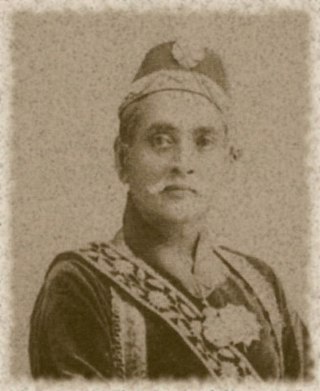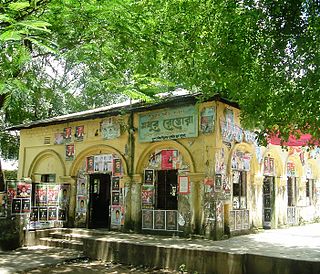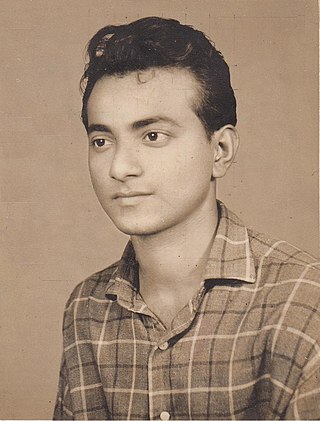
Salimullah Orphanage also known as Sir Salimullah Muslim Orphanage is a historic orphanage in Bangladesh founded by and named after Nawab Bahadur Sir Khwaja Salimullah.

Salimullah Orphanage also known as Sir Salimullah Muslim Orphanage is a historic orphanage in Bangladesh founded by and named after Nawab Bahadur Sir Khwaja Salimullah.
Salimullah Orphanage was established in 1907 as Islamia Orphanage by the Nawab of Dhaka, Nawab Sir Salimullah Bahadur. It was originally located near Ahsan Manzil in a rented building. The governor of Bengal, Thomas Gibson-Carmichael, 1st Baron Carmichael, visiting the orphanage in 1913, he donated one thousand rupees and land near Gore Shaheed Mosque of Amlapara. After the death of Sir Salimullah, the orphanage become known as Salimullah Orphanage. The government of Bangladesh nationalized the orphanage on 2 January 2008. [1] Before the nationalization some land of the orphanage was sold in 2003 and corruption in management remains a major problem. [2] On 17 September 2015 Bangladesh High Court ordered Concord Group to hand over an 18-storey building in Azimpur to Salimullah Orphanage, that the court ruled was illegally built on land owned by the orphanage. [3] [4]

Sir Salimullah Medical College (SSMC), commonly known as Mitford, is a public medical college in Dhaka, Bangladesh. Founded in 1875, it is the oldest and second largest medical school in Bangladesh. It includes Mitford Hospital, which is the oldest hospital in the country and one of the earliest hospitals in the Indian subcontinent from where the evolution of medical education started.

Shahbagh is a major neighbourhood and a police precinct or thana in Dhaka, the capital and largest city of Bangladesh. It is also a major public transport hub. It is a junction between two contrasting sections of the city—Old Dhaka and New Dhaka—which lie, respectively, to its south and north. Developed in the 17th century during Mughal rule in Bengal, when Old Dhaka was the provincial capital and a centre of the flourishing muslin industry, it came to neglect and decay in early 19th century. In the mid-19th century, the Shahbagh area was developed as New Dhaka became a provincial centre of the British Raj, ending a century of decline brought on by the passing of Mughal rule.

Nawab Bahadur Sir Khwaja Ahsanullah KCIE was the third Nawab of Dhaka. He was notable for his philanthropic works in Bengal, most notably his donations to the present Bangladesh University of Engineering and Technology. He also authored books in Persian and Urdu under the pen name of Shaheen. The palace Ahsan Manzil is named after him by his father Khwaja Abdul Ghani.

Nawab Sir Khwaja Salimullah Bahadur was the fourth Nawab of Dhaka and one of the leading Muslim politicians during the British rule in India.

Nawab Khwaja Habibullah Bahadur was a politician from East Bengal, soldier, social worker, and the fifth Nawab of Dhaka. He was the son of Nawab Sir Khwaja Salimullah Bahadur. Under Habibullah's rule, the Dhaka Nawab Estate went into decline until its actual relinquishment in 1952 by the East Pakistan Estates Acquisition Act.

The Nawab of Dhaka, originally spelt in English Nawab of Dacca, was the title of the head of one of the largest Muslim zamindar in British Bengal and Assam, based in present-day Dhaka, Bangladesh. The title of nawab, similar to the British peerage, was conferred upon the head of the family by Queen Victoria as a recognition of the first Nawab's loyalty and contribution to the social welfare activities.
Nawab Major Khwaja Hassan Askari was the sixth and last Nawab of Dhaka. He was born at the Ahsan Manzil Palace in Dhaka. He was the eldest son of Nawab Habibullah Bahadur and Shahryar Begum. He became the Nawab of Dhaka after his father's death in 1958.

Israt Manzil was one of the royal residences of the Nawabs of Dhaka. The mansion served as a retreat for members of the Dhaka Nawab Family.

Old Dhaka is a term used to refer to the historic old city of Dhaka, the capital of Bangladesh. It was founded in 1608 as Jahangirabad or Jahangirnagar, the capital of Mughal Province of Bengal and named after the Mughal emperor Jahangir. It is located on the banks of the Buriganga River. It was one of the largest and most prosperous cities of the Indian subcontinent and the center of the worldwide muslin trade. The then Nawab of Bengal Murshid Quli Khan shifted the capital from Dhaka to Murshidabad in the early-18th century. With the rise of Calcutta during the British rule, Dhaka began to decline and came to be known as the "City of Magnificent Ruins". The British however began to develop the modern city from the mid-19th century.

Salimullah Muslim Hall is a residential hall at Dhaka University, named after Nawab Sir Khwaja Salimullah Bahadur. Inaugurated on 11 August 1931. Among the residential halls of Dhaka University, Salimullah Muslim Hall holds a special status due to its heritage.

Madhur Canteen is a familiar name in the history of the Dhaka University as well as in the national politics of Bangladesh because of its association with various political movements which originated from the Dhaka University. The canteen's current location holds important architectural and heritage value.

The University of Dhaka also known as Dhaka University or DU is a public research university located in Dhaka, Bangladesh. Established in 1921, it is the oldest active university in Bangladesh.

Concord Group is a Bangladeshi conglomerate that was founded in 1973. The industries under this conglomerate include construction, real estate, architecture & design, communication, entertainment, hospitality, and garments.

Syed Nawab Ali Chowdhury was Nawab of Dhanbari of Tangail in East Bengal. He was one of the founders of Dhaka University. He was the first Muslim minister of united Bengal. He was minister of education. His grandson Muhammad Ali Bogra was third prime minister of Pakistan. His son Syed Hasan Ali Chowdhury was minister of East Pakistan government and MP of the second Bangladesh Jatiyo Sangshad.

Azharul Haque (1940-1971) was a Bangladeshi physician-surgeon, who was killed in the Bangladesh Liberation War and is considered to be a martyr intellectual in Bangladesh.
Azimpur Mosque is located beside the Azimpur graveyard in Dhaka. A Persian inscription in the mosque indicates that the mosque was built in 1746 AD by Fayzul Alam. The mosque was built during the reign of Mughal Nawab Alivardi Khan and is the last existing example of a mosque structure with a single dome and a flanking half-domed vault on both sides.

Nawab Khan Bahadur Khwaja Yusuf Jan, was a Kashmiri-Bengali politician and member of Dhaka Nawab family.
Shamsunnahar Khwaja Ahsanullah is a Bangladeshi politician from Bangladesh Nationalist Party, a former two-term Jatiya Sangsad member from the women's reserved seats and a member of the Dhaka Nawab family.
Farhat Banu was a Member of the Dhaka Nawab family and member of the Bengal Legislative Assembly in British India. Her uncle was the Nawab of Dhaka, Sir Khwaja Salimullah.
Paribagh is a neighborhood of Dhaka. It is situated in the north of Shahbagh. It was once the residence of the Dhaka Nawab family. It is now popular for the food street located on Old Elephant Road.
23°43′21″N90°23′15″E / 23.7225°N 90.3876°E